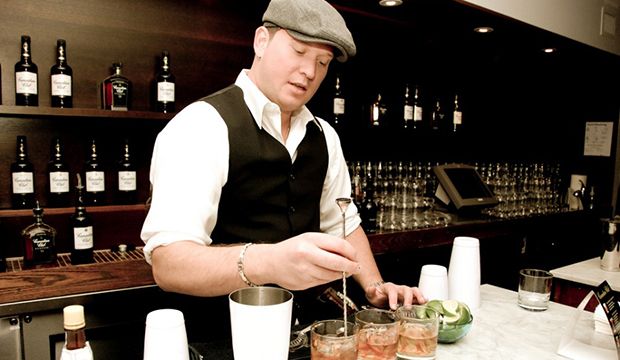
Contextual information helps a company understand its customers and develop a relationship with them that will keep everyone satisfied.
Take Robert, for example. Robert frequents a brown café that overlooks one of the many canals draped on Amsterdam. He is particularly punctual on Thursday evenings, when a local band plays live music and the beer is discounted. He only wishes that the happy hours were extended by thirty minutes, since that would tempt him to enjoy another glass of his favorite amber Belgian drink. At 9:15pm, he settles the tab and cycles away to an awaiting family in the western neighborhood. He isn’t the only one who leaves, though, as the bar suddenly looks half-empty.
The owner of the cafe has been thinking. Only yesterday, he had customers pouring in all evening, well after the happy hours were over. Today, though, things seem strange. Why did several customers leave on what would normally be a busier day for the bartender? He wishes he knew how people spent their money on beer during the weekends, so that he can figure out when and how to tempt customers to walk in and enjoy a drink (or two).
The Answer is Obvious
The answer to his question has been lying around for ages, catching dust, waiting to be unlocked. When Robert visits the pub, he buys a pint glass of De Konick and settles the bill with his debit card. This is all able to happen because of the thing that enables this transfer of money in exchange of a product or a service: the bank.
Until recently, banks have been doing just what is expected of them in the context of a pub crawl: enabling the beer consumers to spend money, and the pubs to receive it. The world as we know it has changed. Technology has evolved, information is available faster and in the right social context, and purses are becoming tighter than ever. Humans are getting wiser with where they spend their money, and the Roberts of the world are no different.
Everyone’s Getting Smarter
But it’s not just the consumers who are looking at getting smarter. Pubs, or the merchants, are very curious to know where their target audience is spending their money. The goldmine of intelligence this information is available in, for instance, is typically the bank’s payment repository, enriched with geo-tags and contextual information. Banks can figure out what the value of the food and beverage market is on weekends between 6pm and 9pm. They can collect and aggregate demographics to come up with facts. As an example, more than two-thirds of the population who dine in a particular restaurant are all between the ages of 27 and 33, and those who earn a gross annual salary of about $55,000.
The possibilities are almost infinite: The pub we touched upon earlier can use this kind of information to figure out when to time their happy hours; restaurants can figure out what kind of music and lighting to host in the evenings at certain hours; and retail outlets know exactly when to display that pair of rugged jeans that would only interest the teenage crowd, and when to swap it for a purple turtleneck sweater aimed at the business-casual working individual.
Putting Heads Together
But that’s just the tip of the iceberg. With the ability to aggregate location-based information, banks can do even more interesting things like offer information on patterns. Consider this: 80% of customers at a Turkish sandwich joint that’s stationed 200 meters from an espresso store are in the age range of 26 to 42; of these, a mere 3% are Italian nationals. However, among these Italian customers, nearly 90% of them have gone on to spend at least three Euros after their Turkish lunch at merchants that can only be classified as coffee shops. The deduction that most Italian office-goers in the neighborhood enjoy an espresso after a meat sandwich allows the merchants (the sandwich maker and the espresso brewer) to put their heads together and come up with an offer targeted at the audience that will gobble it up. The bank remains neutral without influencing the customer, yet enabling the market to compete.
Identifying patterns and relationships in how people spend their money is fast becoming a differentiator, but also a way to do business. Social networks need not be limited to consumers alone: Merchants can come up with ideas on how to collaborate in the best interests of their consumers.
So the next time a Dutchman and a German walk into a bar, it isn’t a premise to a joke — it’s an opportunity for loyalty and revenue.





